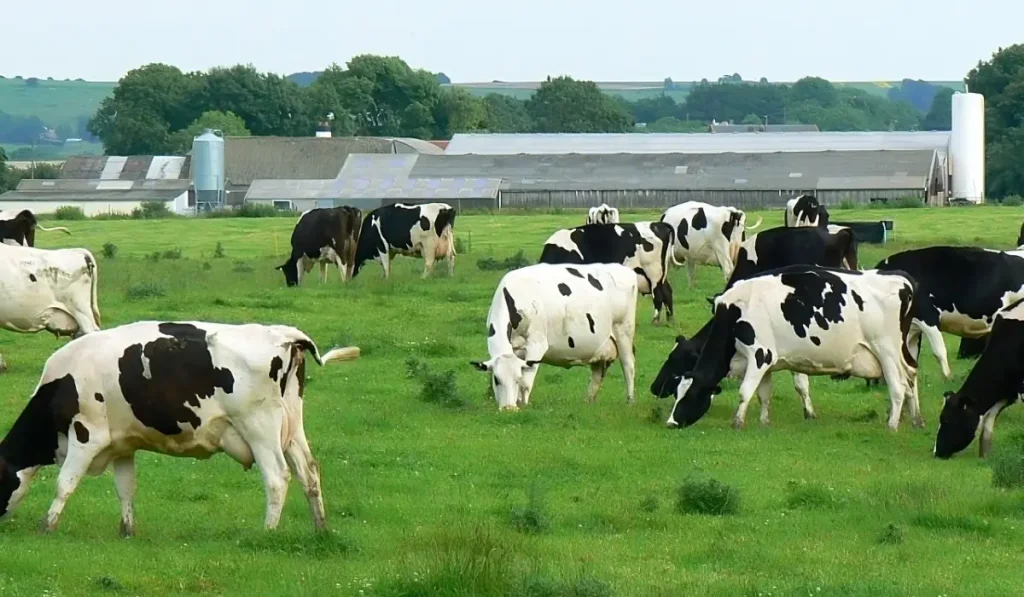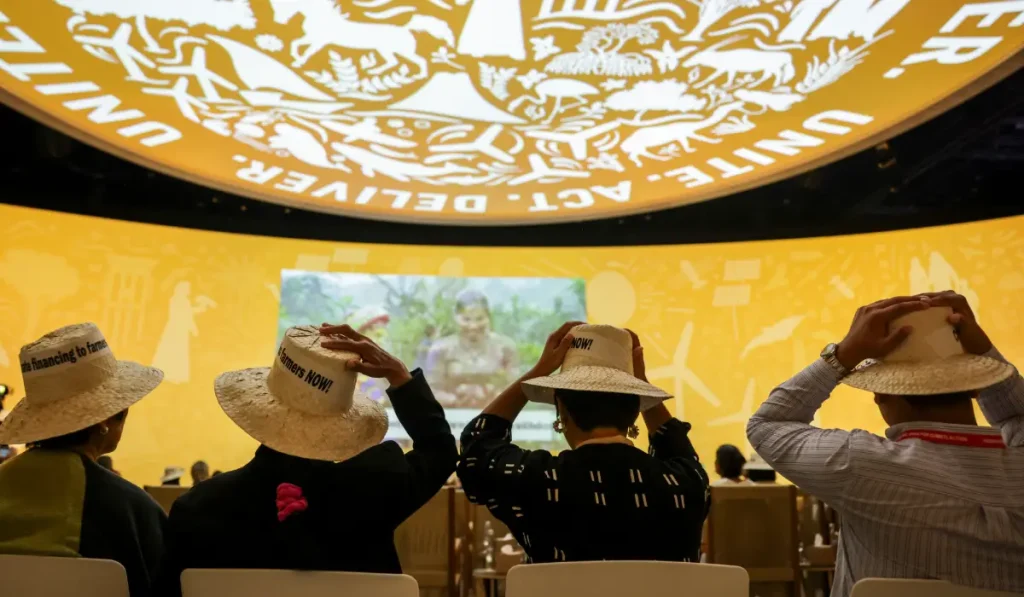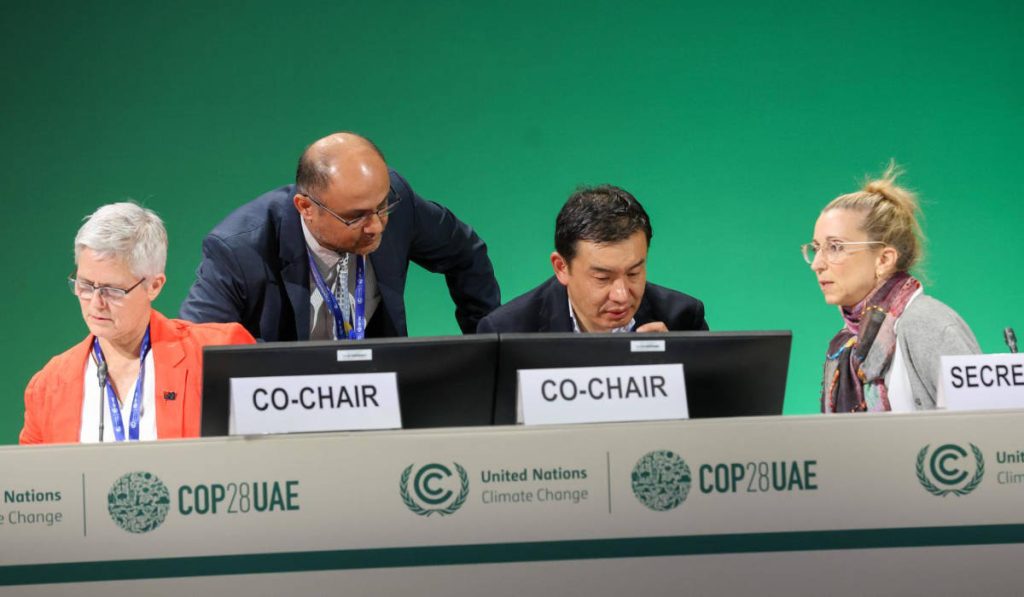On 30 November 2023, more than 70 000 people will descend on Dubai to attend the UNFCCC’s 28th Conference of the Partis (COP), and the 5th Meeting of the Parties to the Paris Agreement (CMA). This will likely be the biggest COP to date, towering in numbers over the last two preceding COPs which brought together approximately 40 000 people. It will be an important COP with key milestones for many reasons, including: the Global Stocktake, the Global Goal for Adaptation (GGA), the hopeful operationalisation of the Loss and Damage Fund, and ambitions to agree to a renewable energy target. In this longer analysis, we delve into the various issues under discussion at the COP, with a focus on African positions and priorities. Our approach is to try and simplify and make accessible some of the more technical elements of the discussion, given the multiple and oftentimes overlapping workstreams of the COP and locate African positions and priorities within these.
This year’s COP
Last year we emerged from a COP where the North/South divide was palpable in almost every negotiation room. Developing countries felt that they were being asked to revisit the fundamental principles of the UNFCCC and Paris Agreement on equity and common but differentiated responsibilities and respective capabilities (CBDRC). In their view, they were being asked to forfeit their policy space and development aspirations without the necessary financial and related support from developed countries. In contrast, developed countries wanted to see more mitigation ambition and sector targets, were desirous for wealthier developing countries like Saudi Arabia and China to co-contribute climate finance and for the private sector to be pulled more into the finance discussion to make up the shortfall. This tension played out on multiple fronts including which countries contribute to the Loss and Damage Fund, the role of the private sector and carbon markets, whether to agree to new sector specific targets under the Mitigation Work Programme, and discussions on the meaning of Article 2(1)(c) and what it means to make financial flows consistent with the Paris Agreement.
Since then, there have been a number of geopolitical and climate related developments that have caused positions within the negotiations to evolve or harden. Accumulating shocks, particularly those brought about by the pandemic and the war in Ukraine, and related energy supply woes, have continued to reorganise global structures, and relationships, and have heightened economic vulnerability, particularly in Africa. The IPCC’s Article 6 report was released, culminating in years of ongoing research and underscoring the urgency of a more ambitious response, but also seeing politics play out around the role of carbon removal technologies. The European Union (EU) brought its controversial Carbon Border Adjustment Mechanism (CBAM) into operation in October this year, and discussions commenced on a global shipping emissions tax as well as a new UN Tax Convention. This year also saw the US start to implement its Inflation Reduction Act and the EU continued to pursue the development of a raft of measures under its Green Deal, including a Net Zero Industry Act. The World Bank officially incorporated climate change under its mantle of objectives, and the IMF continued to focus on climate reforms as part of its revised approach to macroeconomic stability. Climate Finance and the reform of global architecture hit the spotlight during the Paris Summit for a New Global Financing Pact in June this year, and also featured strongly at Africa’s first Climate Summit held in Nairobi in September. Power relations and tensions also continued to shift, with increased tensions between the US and China on a number of fronts such as the South China Sea, technological advancements and trade, as well the expansion of the BRICS Group to include 6 new countries, including the oil rich UAE, Saudi Arabia and Iran. The latter could see a strengthening of critical energy supplies within the group and a shift in investments in critical minerals. This year also saw the African Union join the G20, and the creation of a third chair for Sub-Saharan Africa on the IMF Executive Board. On top of this we also saw the world buffered by increasingly severe climate impacts, such as torrential rains and devastating floods in Libya, record temperatures being broken worldwide, unprecedented wildfires in Canada, Greece, and Hawaii, and ongoing extreme droughts in the Horn of Africa.
Not only have these developments underscored the urgency of highly ambitious responses but they have added further complexity and nuance to UNFCCC negotiations that touch on energy security, climate finance, the role and power of the global south, globalisation and trade.
Going into COP this year, we have also seen the event overshadowed by controversy surrounding the COP28 President Designate, Dr Sultan Al Jaber, a long-time climate envoy for the UAE, but also the CEO of the Abu Dhabi National Oil Co (ADNOC) which recently announced its intentions to boost production of oil and gas. There have been ongoing concerns that this would lead to the COP being co-opted by oil interests, and recent allegations that the UAE is using the COP event to promote and make fossil fuel deals. Optimists have argued that, as president of the national oil company Al Jaber might be able to pull off what others have been unable to with the oil industry, although much depends on your level of cynicism with the sector, and remains to be seen in the outcome of the COP. The UAE has been a strong advocate of carbon removal technologies, which have also come into focus this year, but has also been seeking to champion a renewable energy target, as well as an energy efficiency target. This will be discussed alongside debates around the phaseout of fossil fuels and their subsidies which have bedevilled the COP for years.
The question of fossil fuel phaseouts and renewables targets have tended to dominate media attention preceding the COP, but there’s much more to COP than just mitigation. First, we might see Parties finally agree to a GGA, something very close to the heart of African countries, and a longstanding priority for leveraging adaptation to the same status of mitigation. Second, is that COP28 will herald the conclusion of the Global Stocktake, a process reflecting on the extent to which countries have collectively achieved the goals of the Paris Agreement. This process is critical to charting clear and ambitious action over the coming five years, which is why many have billed this COP as being the second most important COP after COP21 in Paris in 2015 when the Paris Agreement was concluded. Third is that we are likely to see a decision that operationalises the much awaited Loss and Damage Fund, which will address who contributes, who benefits and how, and where it will sit. Lastly, on finance, countries will be negotiating the next climate finance target for 2025, the “New Collective Quantified Goal on Climate Finance” (NCQG), which means they must address how much is needed and, in what form, and how we will ensure transparency and predictability in the provision of funds.
In terms of new issues, it is difficult to look into the crystal-ball of what might dominate discussions, but judging from statements made earlier this year, we might see developing countries put the topic of trade and unilateral “response measures” like the CBAM more firmly on the negotiation table. Something that hasn’t been meaningfully discussed under the negotiations to date. We may also see a push by the G77 and China to have more focused discussions on the obligation by developed countries to support “technology transfer” (technology cooperation and innovation) to developing countries under the Paris Agreement, an issue that was hinted at during the closing sessions of the Climate talks in Bonn in June. Similarly, there is growing momentum to see food systems, agriculture and demand side consumption measures discussed at COP. Historically a discussion on the sensitive issue of demand side management for food has met with resistance, but it may make its way to the discussion table this year. We address each of these topics below.
The Global Stocktake
The Global Stocktake is a five year true-up or inventory of where Parties are when it comes to achieving the goals of the Paris Agreement. It is contentious because it requires countries to agree on what they think the goals of the Paris Agreement are (there is surprising divergence on this), the extent to which they have or have not been met and who or what is to blame. Crucially it also entails agreeing on the way forward with action items to meet these goals over the next five years. The stocktake is meant to guide the next round of Nationally Determined Contributions (NDC) and act as an ambition ratcheting mechanism. For this reason, an ideal outcome would be a robust consensus document that has concrete and actionable outcomes that propels ambitious measures over the next five years within NDCs, until the next stocktake. What is not needed is another document that simply highlights the urgency of action, and points to the need for enhanced ambition and implementation of existing commitments.
Earlier this year, the co-facilitators released a bold and carefully crafted a technical synthesis report with 17 key findings, capturing over 252 hours of meetings and 170 000 pages of information. At the COP, it is intended for the work of the Stocktaking process to then lead to either (i) a formal negotiated decision for adoption by the Parties or (ii) some form of “declaration”. Countries were then invited to make their submissions on the technical synthesis report, which resulted in a detailed series of findings and proposed text which in theory could be used for the basis of a formal outcome. In October, the submissions received by countries were then collated into a dense 65 page document of proposed text setting out the various country positions on past challenges and how these should be remedied going forward. These tended to have a strong leaning towards developing country positions.
The draft reports were generally well received, however, African countries have voiced discontent at the fact that the some of the interim documents did not adequately reflect the need for African countries to be afforded more “policy space” to pursue sustainable development and the SDGs, and that key principles and objectives such as equity and CBDRC, fairness and just transitions are not fully or are inappropriately captured. The AGN also wants to see clearer and more actionable reforms proposed when it comes to climate finance and a firm acknowledgement that the implementation gap is directly tied to the lack of climate finance.
Going into COP28, it would be important to see an outcome that goes beyond a simple declaration of urgency, the need for implementation and ambition, but that honours developing country concerns around the reason for past failures, particularly when it comes to finance and the extent to which developed countries have not been sufficiently ambitious with their own mitigation measures. It is impossible to chart a way forward to remedy implementation gaps if we don’t adequately wrestle with and acknowledge the reasons that have led to those gaps. This will be difficult to achieve politically, however, as the US is typically loath to agree to text that hints at historic responsibility or liability. Equally to be meaningful and to inspire concrete actions within the next round of NDCs, the outcome document needs to be sufficiently detailed on the exact measures needed to address developing country priorities and challenges. This entails tracing practical next steps for countries to integrate in their NDCs when it comes to climate finance, adaptation support, trade and loss and damage. Ideally this will take shape in the form of something more than just a political response, but in a detailed and action oriented roadmap-like decision on where-to and how from here.
Mitigation, Renewable Energy and Fossil Fuels
Many are hoping to see agreement at COP28 on a target of tripling renewable energy by 2030, and the doubling of energy efficiency within the same period. The reasons for optimism are that it’s often easier to agree to a positive target than a negative one, and the hope is that this will fare better than the repeated failed attempts to reach agreement to phase out fossil fuels. We will likely see at least a political declaration (i.e. not a formal negotiated outcome) on the renewable energy target, spurred on by efforts within the UAE, the US and the EU, who have managed to garner support from at least 60 countries for the target. China has also jointly voiced support for the target in a recent joint statement with the US, and African countries have gone even further in the Nairobi Declaration stating they were supportive of increasing renewable energy fivefold by 2030, with the requisite support. But it’s the latter which is the challenge. In an interview with us, Mo Nasr, Egypt’s chief climate envoy, pointed out that the continent cannot achieve a renewable energy target without increased investments. To date it only receives 2% of international renewable energy investments, because of the perceived risk in investing in Africa. He also pointed out that African countries lack the resources to pay for renewable energy, which does not come cheaply and has an additional risk premium attached to it. African countries are therefore rightly prioritising energy security and access, to service the 600 million Africans with no access to energy. If any renewable energy target is to be agreed, meaningful financial reforms to address these challenges also need to be part of the discussion.
African countries are also looking for developed countries to take the lead on mitigation, to have more “policy space” to design their own policies around mitigation, and to have energy intensive primary processing of raw materials to be shifted back to the continent. Doubling energy efficiency by 2030 is also obviously less of a priority to the continent given that most don’t even have access to reliable energy.
Optimism around an agreement on fossil fuel phaseouts is, however, more tempered. Two years ago, countries agreed to accelerate efforts to “phase down unabated coal power” at COP26 (a phase down would mean reducing but not eliminating fossil fuels) and to “phase out” inefficient fossil fuel subsidies. However, global energy supply woes have dwindled the level of commitment to this target and any hope of elevating it to a full phase out is weak. This year the G7 only agreed to “accelerate” the phase out of unabated fossil fuels without committing to any timeframe, and at the G20 countries could not agree to language on a phase out, with Saudi Arabia and a few other countries blocking the proposal. China’s climate envoy has also expressed scepticism that this is realistic technologically, arguing that renewables were unreliable, instead pointing to the importance of carbon removal technologies.
African countries have also expressed their concerns about the process adopted in achieving a phase out and the end of investments, with a preference for phaseout targets to be borne by developed countries prior to 2030, leaving developing countries to pursue their own pathways in this period. In their submission to the Global Stocktake, the African Group of Negotiators (AGN) stated that “a blanket ban on investment in new fossil fuel projects is NOT equitable or just, and cannot be the basis for a just transition. Use of transition fuels such as gas is essential for an ambitious expansion of renewable energy, and avoidance of more carbon-intensive fuels. A political signal from COP28 should affirm differentiated pathways for countries in the pursuit of net zero and fossil fuel phasedown, where no further exploration of fossil fuels in developed countries is targeted well ahead of 2030, whilst affording developing countries the opportunity to close the global supply gap in the short term”.
Adaptation
Agreeing to a GGA at this year’s COP is one of the top priorities of the AGN who proposed it as far back as 2013. The GGA is often likened to the adaptation equivalent of the Paris Agreement’s 1.5oC temperature goal, and it is hoped that by agreeing to one, it will elevate adaptation to a similar status as mitigation. Over the past two years negotiators have been engaging on GGA under the dedicated Glasgow–Sharm el-Sheikh work programme on the GGA. This programme is expected to be concluded at COP28. The key issue is how to agree to a global goal where adaptation tends to be highly localised. Another issue has been political tensions over who should pay for it and whether the finance element needs to form part of the goal itself. In general, developing countries want very detailed targets for the GGA whilst developed countries want more broader and general language (ironically the opposite is the case for mitigation sector specific targets). There is discomfort within many developed countries that a global adaptation goal that is too detailed and targeted is un-implementable given the localised and context specific nature of adaptation and too difficult to measure.
African countries, however, feel that having a targets based approach provides the basis for tracking progress on adaptation action and support, ensures better financial flows and monitoring, and demonstrates collective global ambition. They are willing to defer agreement on the difficult issue of monitoring and evaluation (M&E) systems to the next COP, with a hope that countries can at least agree to what the targets are at COP28.
To understand the African position better: the AGN has proposed we have a general adaptation goal with components related to risk and vulnerability, planning and M&E systems. This would be coupled with various thematic adaptation goals e.g. for disaster warning, health, ecosystems, biodiversity. Overall, the AGN wants a GGA that will “enhance the adaptive capacity and resilience of the global population, including the reduction of climate impacts by at least 50% by 2030, and by at least 90% by 2050 compared to the business as usual scenario and expected impacts identified by scientific reports”. It would also aim for “100% coverage of multi-hazard early warning systems and climate information services and response systems by 2027; and ensure all developing countries have been supported to have comprehensive, implementable and effective adaptation plans, policies and strategies, taking into account the GGA framework.”
Controversially, developing countries also want funding tied to the GGA, developed countries want to keep the finance discussion separate. The AGN has asked for agreement on the GGA to also include consensus on “funding of at least 80% of expressed needs by developing countries, within their NDCS, NAPs, or other nationally identified programs and projects, with the quantum of adaptation finance reaching at least $400bn per annum by 2030, and achieving 50% adaptation finance of the total share of the total flows of finance to developing countries, [ensuring] that at least 50% of the NCQG agreed goal is delivered to adaptation and resilience.”
Finance
Finance will once again be front and centre this year during negotiations. No doubt the global financial architecture reforms discussed at the Africa Climate Summit, the Cabo Verde Declaration on finance, and at the Paris finance summit will feed into negotiations this year and we may see some cover text decisions and Global Stocktake findings around the role of Multilateral Development Banks and International Finance Institutions, debt relief and restructuring, the cost of finance, and possibly even global tax reform, if African countries get their way.
We will also see negotiators engaged in the Sharm el-Sheikh Dialogue on Article 2(1)(c) (which financial flows to be consistent with the goals of the Paris Agreement). There was concern last year that this provision was being used by developed countries to revisit the principles of equity and CBDRC, by subverting the requirements around who was required to provide finance under Article 9 (under this Article developed countries are obliged to provide finance), and deflecting their responsibilities onto the private sector. Based on the recent report from 20 November, arising from the Article 2(1)(c) Dialogue, it seems that there is still no consensus on this issue. However, there is an appetite to continue using this platform for ongoing discussions to explore private finance reform, including on debt, investment risk and the cost of finance, the scale and quality of global finance flows, as well as trade and competitiveness. While the COP cannot formally bind the private sector it can certainly make recommendations and action within other forums.
When it comes to public finance, negotiators will also be preoccupied with discussions on the NCQG for the post 2025 climate finance target, to replace the current $100billion/year one. Discussions are ongoing on the principles and metrics upon which to decide a new target. Developing countries want the target to be informed by science and be outcomes based, guided by the needs and priorities of developing countries, as opposed to being any amount developed countries happen to pledge. They are also wanting a burden sharing plan, for example a roadmap that would set out which countries contribute to the total, how much and when. In contrast developed countries are reluctant to commit their taxpayers to large amounts over the medium term. Equally African countries are clear that the finance must not exacerbate debt and be in the form of concessional finance and grants. Ideally it should be an overarching goal for 2025-2030 with annual targets within it that are reviewed and updated periodically, noting that NDCs at present will require $5.8 trillion up to 2030 and just transition needs are $4 trillion/year.
During the Bonn climate talks in June this year, Zambia speaking for the AGN said they were relatively happy with progress and felt that while no actual numbers were on the table yet, they would rather this be informed by technical assessments. Unfortunately the trust capital on finance going into the negotiations is low at this point. African countries were hoping to see a plentiful replenishment of the Green Climate Fund (GCF) prior to the COP as a demonstration of good faith from developed countries. However, following pledges made in October for the 2024-2027 period only $9.32 so far has been pledged. Some countries actually provided less than before (e.g. France) whilst the US again did not make any pledges.
Loss and Damage
One of this year’s focal issues at COP28 will be agreement on the operationalisation of the Loss and Damage Fund, as mandated at COP27 last year. Through the course of this year, negotiators have engaged on the design of the fund within a body named the Transitional Committee on Loss and Damage. The Committee has only very recently and, to much acclaim, made its recommendations on the Fund, which will be considered by the Parties for further discussion and hopefully, adoption at the COP.
Going into the discussions, developing countries were adamant that the Fund needed to be fit for purpose, and operate differently to existing funds like the Adaptation Fund and GCF. They also wanted it to be sufficiently capitalised, an issue that is relatively pressing since there are no formal and material pledges to the fund so far, except for a hint by the EU that they will make a “substantial” one at the COP. As we reported in detail earlier this month, the current draft set of recommendations unfortunately contains no legal obligations for developed countries to capitalise the Fund. Moreover, it will be hosted by the World Bank under a 4 year transitional arrangement. There are concerns that the Bank lacks the organisational culture to manage funds of this nature and will be subject to US influence.
Developing countries made significant concessions to see these recommendations made to the COP, and the resulting compromise is, like any, one where no party is happy with its terms. Indeed, the US was vocal that it disagreed with the language of the draft which it felt was insufficiently clear on legal responsibility to finance loss and damage, and thus it did not represent a “consensus” view. In those circumstances it would be quite a victory to see a Loss and Damage Fund fully operationalised by the end of this COP.
Trade and Response Measures
Earlier this month we reported in detail on how developed countries were blocking a discussion within the COP on trade within the UNFCCC’s dedicated forums, namely within the Forum on Response Measures and the Katowice Committee of Experts on the Impacts of the Implementation of Response Measures (KCI). During the Bonn climate talks in June, the G77 and China tried to firmly place climate and trade measures within the work plan of the KCI, ensuring they had a proper place on the negotiation table. Of all the climate related mitigation measures that have been mooted or implemented this year, the EU’s Carbon Border Adjustment Mechanism (CBAM) is probably the most controversial and warrants discussion at COP. Developed countries, led by the US, UK and EU, however, pushed back maintaining that the World Trade Organisation was the more appropriate forum to address these issues and it should not come under discussion under the Paris Agreement.
The UNFCCC and Paris Agreement express that “Response Measures”, broadly understood as mitigation related measures that can have domestic as well as cross border impact, include trade measures. The formal agenda for COP28 will be agreed right before the COP starts, and no doubt there will be discussions about when, where and if at all climate and trade related measures will feature. The KCI or Mitigation Work Programme seems the most logical place to have this engagement, but existing tensions suggest that this might not happen.
Food Systems and Agriculture
Agriculture and food systems have long been agenda items for the COP but have not achieved any major breakthroughs yet. This year, the COP28 Presidency has sought to make food systems transformation central to the COP agenda. Food systems and related land uses are relevant to mitigation and adaptation, both because they are a sizable source of GHG emissions, and because they are deeply vulnerable to climate impacts. Food has historically been a highly sensitive topic with many developed countries reluctant to take domestic measures to curb consumption. Momentum is growing though and this can be seen in the interest in food systems at the G7, G20 and Biodiversity COP last year.
In Sharm el-Sheikh last year, a “Joint Work on Implementation of Climate Action on Agriculture and Food Security was created” to extend the life of the existing Koronivia programme on the same topic. It was hoped that this platform would be used to share knowledge on best practices, and support access to finance, technology and capacity building. But some parties have been reluctant to give it a wide mandate on food systems and last year there was only agreement to include “food system approaches” but no agreement on other specific measures such as nutrition and dietary shifts.
At present, African countries are looking to have an Expert Group on Agriculture and Food security established within this forum. They also have made detailed proposals on what can be included within its mandate, such as technologies and practices to reduce post-harvest losses, cross border impacts and agriculture, land based solutions for resilience, and the water, energy and food nexus. They have not proposed the inclusion of measures to reduce food related emissions, understandably since the continent’s contribution is minimal in this respect and the focus is protecting the agricultural value chain from climate impacts, and less so on food related emissions. That notwithstanding, we will no doubt see this issue come up at COP, possibly in the context of discussions around the Food and Agriculture Organization’s ‘road map’ to reducing emissions from food and agriculture systems.
Going Forward
Similar to last year, we might see many of the early battles fought and won in the early days of the COP when the agenda is agreed to. This will likely set the tone of where Parties stand on various issues and what is likely to dominate. We will continue to track developments at the COP and will provide you with updates and views as negotiations progress. For those going, have safe travels and please share with us any insights you have or updates on our Twitter or LinkedIn page.






